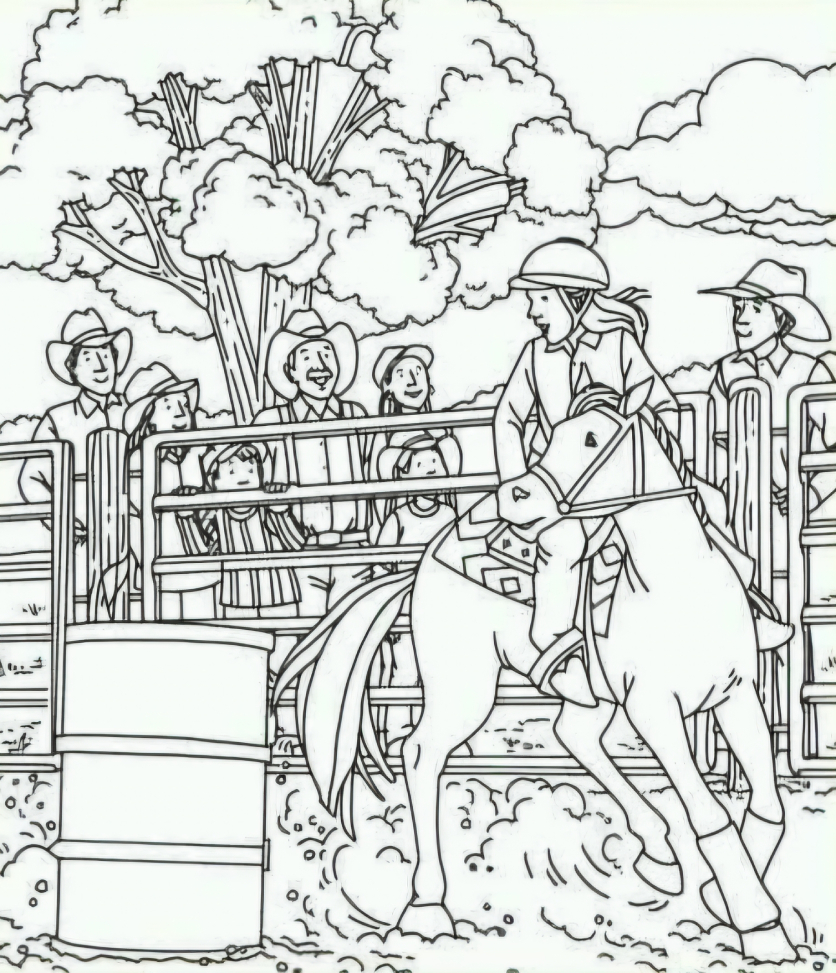Feel the Rush of Barrel Racing: Mastering Speed, Precision, and Equestrian Excellence
What Is Barrel Racing and Why It Thrills Equestrians
Barrel racing stands out as one of the most electrifying rodeo events: a timed race where horse and rider weave around three barrels in a cloverleaf pattern. It’s a heart-pounding blend of speed, agility, and partnership, demanding razor-sharp turns and lightning-fast sprints across the arena. For spectators, the thunderous hoofbeats and cheers make barrel racing a showstopper. For riders, every run tests skill, trust, and split-second decision-making. Whether you’re a seasoned competitor or a newcomer curious about equestrian sports, barrel racing’s blend of athleticism and strategy offers an unbeatable adrenaline rush.

Understanding the Cloverleaf Pattern: Navigate with Precision
The signature cloverleaf pattern underpins every barrel racing course:
- Start Line Sprint:A strong, straight burst out of the gates sets the pace.
- First Barrel Turn:Riders choose left or right first; a tight, balanced circle demands precise leg and rein cues.
- Crossover Dash:After the first turn, the horse stretches into a full gallop toward the second barrel.
- Second and Third Turns:Maintaining stride and balance, riders execute mirror-image turns, ensuring the horse’s hindquarters stay engaged.
- Final Gallop to Finish:A straight sprint—every stride counts as the clock stops at the finish line.
Mastering this pattern comes down to thousands of practiced maneuvers, where rider subtlety and horse responsiveness transform a potential time-waster corner into a time-saver.
Essential Skills for Riders: Balance, Timing, and Communication
Barrel racing success hinges on a trio of core rider skills:
- Impeccable Balance:Stay centered in the saddle during tight turns. Use your hips and core to follow the horse’s motion, preventing over- or under-steering.
- Perfect Timing:Learn when to cue the horse to accelerate, decelerate, and lean into each turn. Subtle shifts in rein pressure and leg aids guide the horse’s stride.
- Clear Communication:Build trust through consistent, patient groundwork. A well-trained horse must read light cues—neck reining, seat shifts, and voice commands—to execute complex moves at high speed.
Regular drills—pole bending, slow-speed circles, and transition exercises—hone these skills, making split-second decisions second nature under pressure.

Choosing and Training Your Barrel Horse: Breed, Build, and Bond
While any breed can run barrels, Quarter Horses dominate the arena thanks to their muscular hindquarters and fast-twisting agility. When selecting a barrel prospect, look for:
- Athletic Conformation:Well-muscled hind end, strong pasterns, and correct leg alignment for shock absorption.
- Natural Quickness:A willing attitude, forward energy, and a smooth, rhythmic gait.
- Trainable Temperament:Intelligence, calm under pressure, and eagerness to learn.
Training begins with foundational ground work—lunging, desensitization drills, and pole exercises—before gradually introducing barrel patterns at a walk, trot, and finally full gallop. Consistency and positive reinforcement build confidence so horse and rider approach each barrel as a well-choreographed dance.
Essential Gear and Safety for Barrel Racing
Protect both you and your equine partner with the right equipment:
- Helmet vs. Cowboy Hat:Safety helmets are increasingly popular, offering crucial head protection during high-speed runs and falls.
- Saddle Fit:A well-fitted barrel saddle with a secure horn, close-contact panels, and balanced seat helps maintain stability.
- Protective Leg Gear:Bell boots, splint boots, or skid boots safeguard against brush contact and strain during tight turns.
- Quality Reins and Bit:Smooth communication demands durable, comfortable reins and a bit suited to your horse’s mouth.
Regular tack checks before each run prevent equipment failures, and vet-approved shoeing supports hoof health on arena surfaces.

Training Routines: From Groundwork to Full-Speed Runs
An effective barrel racing training plan balances variety and repetition:
- Groundwork Days:Focus on lunging, lateral flexion, and responsiveness to cues—building communication without the saddle.
- Pole and Cone Drills:Set poles at barrel spacing to rehearse the cloverleaf at controlled paces; slow builds confidence before speed work.
- Turn-Pattern Practice:Walk and trot the actual barrel pattern, refining angles and body position.
- Speed Runs:Once pattern memorization is solid, add full gallop sprints—always cool down with a walk to aid muscle recovery.
- Cross-Training:Incorporate trail rides, hill work, or dressage basics to improve balance, strength, and mental focus.
A well-structured routine—mixed with rest days for recovery—produces peak performance on race day.
The Barrel Racing Community: Events, Clinics, and Camaraderie
Barrel racing thrives on community spirit. Local rodeos and equine centers host weekend jackpots, offering accessible entry points for all levels. Clinics led by champions provide hands-on instruction and networking opportunities. Social media groups and forums let riders share tips, videos, and success stories—fostering encouragement and mentorship. Whether you’re cheering by the pen, swapping tack-hacks backstage, or celebrating a personal best time, the barrel racing world blends fierce competition with unwavering support.

Conclusion: Embrace the Speed, Skill, and Spectacle of Barrel Racing
Barrel racing elevates equestrian sport to a high-octane spectacle where every millisecond counts. From mastering the cloverleaf pattern and building unbreakable trust with your horse, to gearing up safely and tapping into a vibrant community, the journey demands dedication, finesse, and heart. Whether you’re a passionate competitor striving for a new personal record or a thrill-seeker drawn to the roar of the arena, barrel racing offers an unforgettable adventure. So saddle up, tighten those cinches, and feel the exhilarating pulse of hooves on dirt—it’s time to chase that buzzer and carve your own path around the barrels. Good luck, partner!